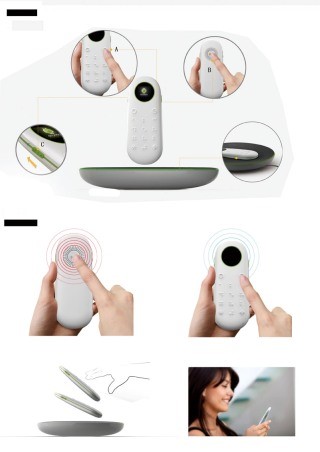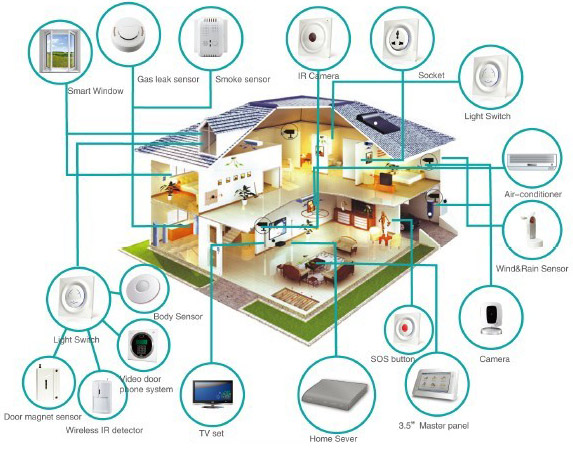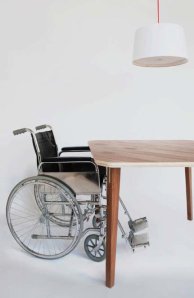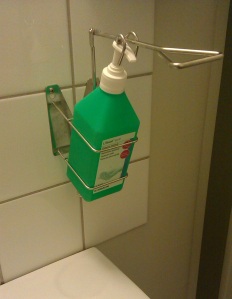Yahan Li (Yahan.Li.2556@student.uu.se)
Blindness can cause distinguished stigmatization because more than 80% of perceptions are based on visual sense and when a blind person wants to act like others, it will be really easy to tell he or she has visual impairment. However, living in a different way is not the synonym of stigmatization. Apart from changing the social bias, we can also use better non-excluding designs to minimize stigmatization and broaden the definition of normality.

Figure 1: Cellphone for blind people
In my view, minimizing stigmatization is to offer specific supports for people with impairments in a more appropriate way that can make them less different from people without impairments. While broadening the meaning of normality means to offer essentially the same supports for both groups.
And in this article, I would like to present my ideas of better designs aiming at helping blind people. Please be aware of that some of them have already made significant progress while some are kind of utopia from my wild imagination.
- Minimizing stigmatization
(1) Cool protecting glasses
Except for the concern of aesthetics, 80% of the blind people have weak abilities to see, so the glasses are useful to protect the remaining vision. By designing beautiful protecting glasses for them, the outlook of blind people can be more appealing and they can show their unique personality. Short-sighted people also wear glasses but they have more stylish choices. Therefore, it is vital for blind people have brilliant designed glasses of their special use.
(2) Walking support
We can design dedicate walking support device embedded in usual things to reduce stigmatization, such as navigational smart cap, glasses or even jackets. Using canes or guide dogs are useful to some extent but they can cause distinctive awareness, which may turn to stigmatization. By offering embedded walking support, blind people can reach the places as they like without clearly “extra” help.
And since nowadays blind people cannot fully rely on the walking cane or urban infrastructure, these technical designs may as well provide more secure and efficient walking and navigational support.
(3)Universal websites and other electronical devices
In 21st century we are all living in the information society. It is hard to imagine living without computer. The Internet is full of useful information resources so we should not exclude blind people from this wonderful treasure. We can add sound information to help blind people know the structure of the website and choose which part they want to have a deep insight. The computer system, both the software and hardware, should be built in an accessible way, too. Perhaps we will have changeable interface in the future so that blind people can feel the uneven surface of picture and Braille.
- Broadening the area of normality
(1) Smart Home/ Smart building

Figure 2:Blueprint of smart home
It is a great challenge for the blind to tell the location of furniture, the water tap and other daily equipment. If houses can provide audio support and haptic clues, it will be easier for them to do indoors activities. For example, blind people can ask a remote controller or a robot where the stove is and it will guide the user to get it. And the user can follow a line of dots to reach to the rotary knob and he or she knows the temperature settings by tactile clues. A timer will start when the stove begins working and the user can easily know the time and current temperature of cooking. Maybe the controller or robot can give suggestion about when to turn of the fire, too.
Smart home/ smart buildings have been popular concepts in recent years. It seems that we take it for granted that using intelligent devices in rooms is convenient and helpful, so we can naturally derive that for people with visual impairment it is certainly acceptable to receive help from well-designed products.
There are plenty of things to realize with smart home/ smart buildings. If the blind can deal with daily trivial things simply by some feedback from the system, they can gain better self-images and broaden the meaning of normality.
(2) “Synesthesia” Design
Synesthesia, a neurological phenomenon in which stimulation of one sensory or cognitive pathway leads to automatic, involuntary experiences in a second sensory or cognitive pathway. (Reference: Wikipedia, the column“Synesthesia”) Here I use it as a metaphor implying using other sensory to create visual image. For patients with synesthesia, they can see colors of the sounds, see flavors and etc. If a person just has damage of eyeballs, not including the brain or nerves, there is a chance for him or her to “see” images by other sensory organs. There is already a design to put stimulating sensors below the tongues to help the blind people get sort of view in their brain. (Reference: BrainPort, sensory information can be sent to one’s brain via a signal from the BrainPort (and its associated sensor) that terminates in an electrode array which sits atop the tongue) A relevant product is BrailleSight, which can help blind people “see” by tactile feedback.
This method can be widely used even among normal people. Some people are much admired to those having synesthesia since it sounds amazing to be able to listen to colors. Some treat this disease as gifts by god. It is really thrilling that we are possibly to create the connections between different senses and surely this design can broaden the area of being normal.

Figure 3: Synesthesia — listening to colors
(3) Audio book and voice reader
Children and people spending a lot of time in commuting enjoy listening to audio books. So it is a good idea for blind people to learn from audio books. “Normal” people can hear texts, so do blind people. However, many books are not available in the audio format now and some books cannot be listened to (e.g. dictionaries and encyclopedia). Therefore, it is important to help blind people get rid of the limited choice range of audio books. And an automatic voice reader can help with that by scanning the text and read it for the user. We have this type of product now but there is still room for improvement of accuracy. And maybe in the future we can use the scanner to tell the user what a picture or diagram looks like.



 Anything that needs to be pushed in the house should not involve being strong. Aids for the soap, as seen in some clinics (like in the one in the picture) are an inspiration for this. Maybe we could use a similar idea for doors? Some doors may need to be heavy (do they?), due to fire prevention, but that doesn’t mean we need to do all the effort to push them. What about using the same sensor/button combination to open doors at campus? Sometimes we may see this button as for “lazy” people but… is using the knob and pulling such a workout? Should it be?
Anything that needs to be pushed in the house should not involve being strong. Aids for the soap, as seen in some clinics (like in the one in the picture) are an inspiration for this. Maybe we could use a similar idea for doors? Some doors may need to be heavy (do they?), due to fire prevention, but that doesn’t mean we need to do all the effort to push them. What about using the same sensor/button combination to open doors at campus? Sometimes we may see this button as for “lazy” people but… is using the knob and pulling such a workout? Should it be?